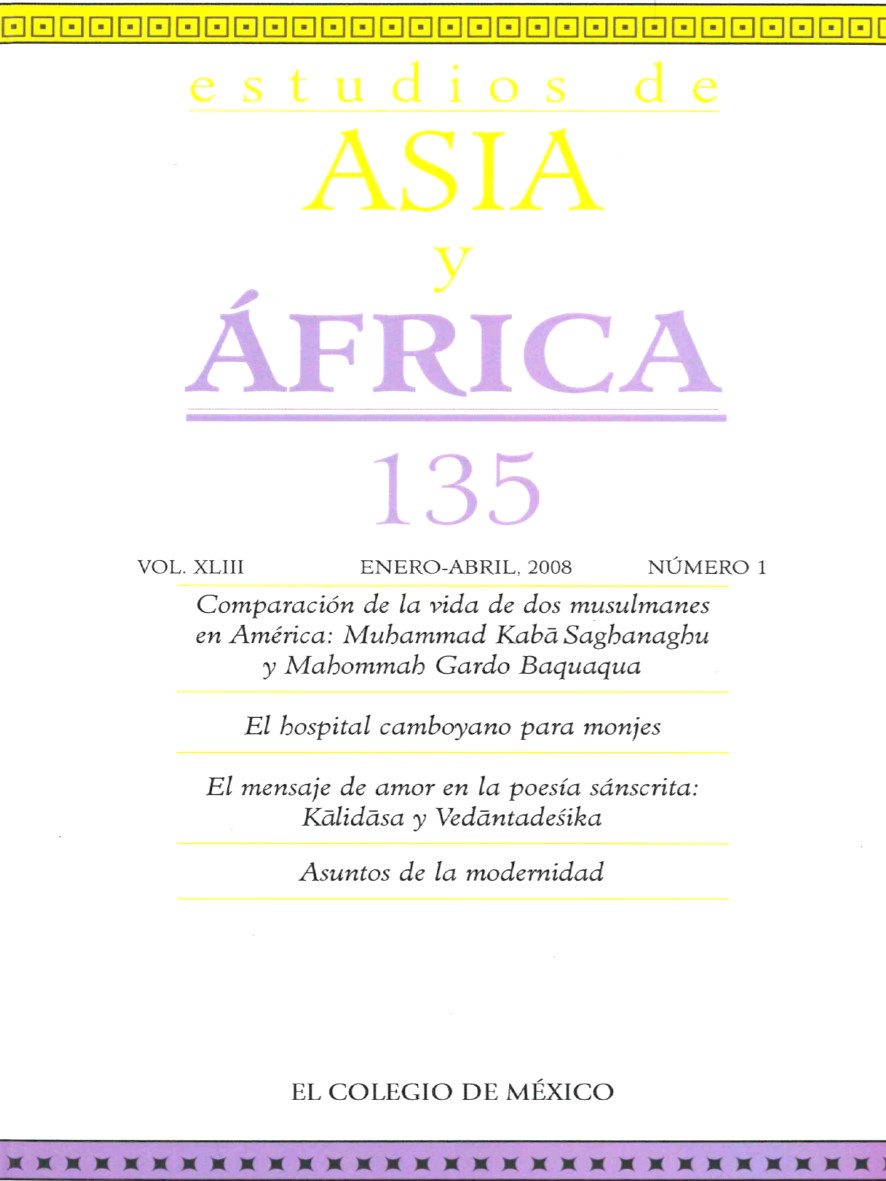Resumen
No es del todo infrecuente encontrar referencias académicas a las raíces cristianas de conceptos occidentales modernos tales como individualidad o derechos, o la tesis weberiana de que las raíces históricas del capitalismo yacen en la ética protestante. Sin embargo, rara vez se encuentran referencias a los vínculos entre religión y las instituciones de la modernidad occidental en la práctica real. Esto se relaciona con el hecho, explorado ya por Casanova, de que en muchos países occidentales la modernización implicó el desarrollo de la esfera secular, al tiempo que la religión se consideró como un asunto “privado”.
Referencias
Agence Khmer Presse, “Inauguration de L’Hôpital des Bonzes”, 22 de febrero de 1956, p. C/2.
BAPAT, P. V., 2500 Years of Buddhism,Delhi,Government of India,The Publications Division, 1956.
CASANOVA, José, Public Religions in the Modern World, Chicago, University of Chicago Press, 1994.
CHANDLER, David, The Tragedy of Cambodian History, New Haven, Yale University Press, 1991.
CHATTERJEE, Partha, Nationalist Thought and the Colonial World: A Derivative Discourse?, Londres, Zed Books for the United Nations University, 1986.
DE BERNON, Olivier, “Le Buddh Daünày: Note sur un Texte Apolcalyptique Khmer”, BEFEO, 81, 1994, pp. 83-100.
DE BERNON, Olivier, “La prédiction du Bouddha”, Aséanie,1:43-66, 1998.
EDWARDS, Penny, “Cambodge: Thecultivation of a nation, 1860-1940”, Ph. D. Dissertation, Monash University, 1999.
EDWARDS, Penny, “Making a religion of the nation, and its language: the frenchprotectorate (1869-1954) and the Dhammakay”, en J. Marstony E. Guthrie (eds.), History, Buddhism, and New Religious Movements in Cambodia,Honolulú, University of Hawaii Press,2004.
GOMBRICH, Richard, Theravada Buddhism: A Social History from Ancient Benares to Modern Colombo, Londres-Nueva York, Routledge, 1988.
GUTHRIE, Elizabeth, “Buddhist temples and cambodian politics”, en People and the 1998 National Elections in Cambodia: Their Voices, Roles and Impact on Democracy, Phnom Penh, Experts for Community Research, 2002.
HANSEN, Anne, “Khmer identity and theravada buddhism”, en J.Marston y E. Guthrie (eds.), History, Buddhism, and New Religious Movements in Cambodia, Honolulú, University of Hawaii Press, 2004.
HARRIS, Ian (ed.), Buddhism, Power and Political Order, Londres-Nueva York, Routledge, 2007.
Hôpital des Bonzes, Règlement Intérieur, Phnom Penh, Hôpital des Bonzes, 1956.
Ja Gan y Un’ Sou, “Prawatti Braþ Sakyamunîchediy”, Kambuja Suriya,56(4), 2000, pp. 87-93.
Institut Bouddhique, L’An 2500 du Bouddhisme, Phnom Penh,Institut Bouddhique, [1957] 2001.
KAEV SAR”ET, Aübî Dananisaïks knuõ Kar Juay Saïgroþ Braþ Saïkhâbadh, Phnom Penh, 1964.
Kampuchea Soriya, “Bidhî Sambodh Chlaï Mandî Bedy Braþ Saïgh”,Kampuchea Soriya, vol. 28(4), 1956a, pp. 382-397.
Kampuchea Soriya, “Bidhî Sambodh Chlaï Mandî Bedy Braþ Saïgh”, Kampuchea Soriya, vol. 28(5), 1956b, pp. 491-100.
KHUON NAY, “Aramgakatha”, en Sakhantika Samagam Gilan Saïkhraþcaüboþ Braþ Saïkh Buddhasasanik, 1950.
LESTER, Robert C.,Theravada Buddhism in Southeast Asia, Ann Arbor, University of Michigan Press, 1973.
MALALASEKERA, G. P., Dictionary of Pali Proper Names, Nueva Delhi,Munshiram Manoharlal Publishers, 1983.
MARSTON, John, “La reconstrucción de budismo ‘antiguo’ de Cambo-ya”, Estudios de Asia y África, vol. XXXVII(2), 2002, pp. 271-303.
MARTIN, Marie Alexandrine, Cambodia: A Shattered Society, trad. Mark M. McLeod, Berkeley, University of California Press, 1994.
MUNSON, Frederick P. et al., Area Handbook for Cambodia, Washington, U. S. Government Printing Office, 1968.P”AÏ KAT’, Ven, “Gilanupañhanakatha”, Kampuja Suriya, 29(1), 1957, pp. 1-9.
REYNOLDS, Craig, Thai Radical Discourse. The Real Face of Thai Feudalism Today, Ithaca, Nueva York, Southeast Asia Program, 1987.
REYUM, “New Khmer Architecture”, en Cultures of Independence, Phnom Penh, Reyum, 2001, pp. 3-62.
SAM, Yang, Khmer Buddhism and Politics 1954-1984, Newington, CT, Khmer Studies Institute, 1987.
SARKISYANZ, E., Buddhist Background of the Burmese Revolution,The Hague, Martinus Nijhoff, 1965.
SIHANOUK, Norodom, Notre Socialisme Bouddhique, Phnom Penh,Ministère de l’Information, 1965.
SIHANOUK, Norodom, “Urbanisme, Phnom Penh ‘Le Nouvel Angkor Thom’. Villes Provinciales, Tourisme & Industrie Hoteliere, Artisanat...”, en Photos-Souvenirs du Cambodge: Sangkum Reastre Niyum, Phnom Penh, Rama Printing International, 1969, pp. 1-5.
SMITH, Frank, Interpretive Accounts of the Khmer Rouge Years: Personal Experience in Cambodian Peasant World View, Occasional Paper, núm. 18, Madison, WI, Center for Southeast Asian Studies, 1989.
STUART-FOX, Martin y Rod Bucknell, “The politicization of the bud-dhist Sangha in Laos”, Journal of Southeast Asian Studies, 12(1), 1982, pp. 60-80.
Esta obra está bajo una licencia internacional Creative Commons Atribución-NoComercial-SinDerivadas 4.0.
Derechos de autor 2022 Estudios de Asia y África


